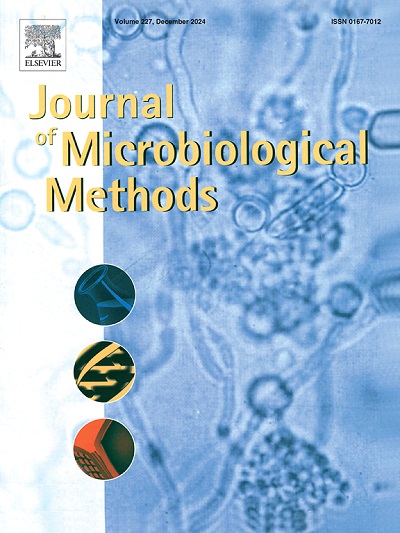Rapid antibiotic sensitivity prediction in Pseudomonas aeruginosa using UV–vis-NIR spectroscopy and gray-box one-vs-all models
IF 1.9
4区 生物学
Q4 BIOCHEMICAL RESEARCH METHODS
引用次数: 0
Abstract
Pseudomonas aeruginosa is a widespread pathogen known to cause infections in various hosts, particularly threatening immunocompromised patients. Although determining antibiotic sensitivity is crucial for appropriate patient care, existing diagnostic methods remain time-consuming, which can delay targeted therapy. In this study, we propose a novel, interpretable, and cost-effective framework that combines ultraviolet-visible-near-infrared (UV–Vis-NIR) spectroscopy with subgroup discovery and a one-vs-all multilayer perceptron (MLP) model to predict antibiotic sensitivity without the need for traditional culture methods. Unlike prior approaches that depend on expensive instruments or black-box algorithms, our method leverages spectral pattern interpretability to identify key wavelength features associated with distinct resistance categories. Testing on clinical isolates of P. aeruginosa, the model achieved optimal prediction accuracy within 10 min of culture time, significantly reducing the typical 48–72 h turnaround time of conventional culture-based susceptibility testing. This work demonstrates a promising direction for rapid, low-cost, and clinically actionable antimicrobial susceptibility testing that balances performance with explainability.
利用紫外-可见-近红外光谱和灰盒单抗模型快速预测铜绿假单胞菌的抗生素敏感性。
铜绿假单胞菌是一种广泛存在的病原体,已知可在各种宿主中引起感染,特别是威胁免疫功能低下的患者。虽然确定抗生素敏感性对于适当的患者护理至关重要,但现有的诊断方法仍然耗时,这可能会延迟靶向治疗。在这项研究中,我们提出了一种新颖的、可解释的、具有成本效益的框架,该框架结合了紫外-可见-近红外(UV-Vis-NIR)光谱与亚群发现和一比全多层感知器(MLP)模型来预测抗生素敏感性,而无需传统的培养方法。与之前依赖于昂贵仪器或黑盒算法的方法不同,我们的方法利用光谱模式的可解释性来识别与不同电阻类别相关的关键波长特征。在铜绿假单胞菌临床分离株的试验中,该模型在10 min培养时间内达到最佳预测精度,显著缩短了传统药敏试验典型的48-72 h的周期。这项工作为快速,低成本和临床可操作的抗菌药物敏感性测试提供了一个有希望的方向,以平衡性能和可解释性。
本文章由计算机程序翻译,如有差异,请以英文原文为准。
求助全文
约1分钟内获得全文
求助全文
来源期刊

Journal of microbiological methods
生物-生化研究方法
CiteScore
4.30
自引率
4.50%
发文量
151
审稿时长
29 days
期刊介绍:
The Journal of Microbiological Methods publishes scholarly and original articles, notes and review articles. These articles must include novel and/or state-of-the-art methods, or significant improvements to existing methods. Novel and innovative applications of current methods that are validated and useful will also be published. JMM strives for scholarship, innovation and excellence. This demands scientific rigour, the best available methods and technologies, correctly replicated experiments/tests, the inclusion of proper controls, calibrations, and the correct statistical analysis. The presentation of the data must support the interpretation of the method/approach.
All aspects of microbiology are covered, except virology. These include agricultural microbiology, applied and environmental microbiology, bioassays, bioinformatics, biotechnology, biochemical microbiology, clinical microbiology, diagnostics, food monitoring and quality control microbiology, microbial genetics and genomics, geomicrobiology, microbiome methods regardless of habitat, high through-put sequencing methods and analysis, microbial pathogenesis and host responses, metabolomics, metagenomics, metaproteomics, microbial ecology and diversity, microbial physiology, microbial ultra-structure, microscopic and imaging methods, molecular microbiology, mycology, novel mathematical microbiology and modelling, parasitology, plant-microbe interactions, protein markers/profiles, proteomics, pyrosequencing, public health microbiology, radioisotopes applied to microbiology, robotics applied to microbiological methods,rumen microbiology, microbiological methods for space missions and extreme environments, sampling methods and samplers, soil and sediment microbiology, transcriptomics, veterinary microbiology, sero-diagnostics and typing/identification.
 求助内容:
求助内容: 应助结果提醒方式:
应助结果提醒方式:


